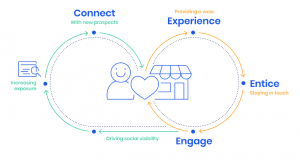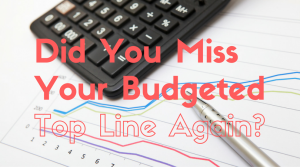
There’s no way around it: Sales forecasting is guess work for some executives. However, in reality, those guesses should be based on fact.
Many people make their living from educated guesses in gambling such as blackjack, horse racing, and March Madness pools. But let’s be serious for a moment: your sales forecast should not be based on a hope and a prayer. And you don’t need a degree in Statistics or Accounting in order to create an accurate forecast. What you do need is the ability to make sense of your client and sales data in relation to your team, your product, and your sales cycle. However, it all starts with quality data.
By combining quality data with knowledge about your team and sales process, you can create a more accurate sales forecast for your reps, resulting in increased morale, better processes, and more sales. It’s easier said than done, but the takeaway is that it can be done, and the hard work will pay off in everyone’s favor.
The basic questions you should start with are: Where can you find quality data to prospect and allocate to your forecast? How do you determine the real accuracy of your sales reps’ data? And how do you teach your reps to mine their data for valuable context in order to improve their forecasts?
Quality Data Helps Your Reps Get From Point A To Point B
At QuotaFactory, we gathered information from 20,000+ calls from our in-house sales development teams within a month. We separated reps into two categories: one with good data (91% accurate) and one with bad data (67% accurate). From there, we calculated metrics to determine how fast sales reps were able to reach and convert decision-makers, ultimately concluding with which data source was most helpful and why. We displayed this visually in one of our QuotaFactory infographics.
The infographic separates the information into three sections: data accuracy, live conversations, and conversions to opportunities. To think of this from a sales forecasting perspective, I’d like to tweak those categories:
- How Accurate is Your List Data?
- How can Your Process or Another Tool Help You Cleanse Your Data?
- Using Sales Context from Prospecting Efforts, How can You Accurately Position Your Prospects in Relation to Your Forecast?
It’s often repeated that sales reps have the opportunity to act as entrepreneurs. Nowhere is this more true than when talking about data. After buying or cultivating a list — no matter how accurate or inaccurate it is — your sales rep is tasked with cleaning and appending it, calling on it, and gaining valuable knowledge from it. The information they find will then be used for their own sales forecast in the future and ultimately determine factors like sales compensation, incentives, bonuses, and more.
Let’s go through each of these steps and talk about how accurate, quality data can improve your sales forecast for the better.
How Accurate Is Your List Data?
Vendors never guarantee 100% accuracy. There’s a reason for that: companies are evolving all the time. However, the best data sources keep their lists up-to-date, aggregating new information as soon as possible.
If your data is not accurate, your reps will waste way more time verifying contact information, finding email addresses, or prospecting unassuming contacts. While negotiating with a list vendor you trust is important, you can also implement monthly data hygiene checks (for outbound and inbound data) and encourage your reps to constantly update their contacts information after each interaction (it’s in their best interest, after all).
The important thing to remember, though, is that no matter how accurate your list data is, you can’t build your entire company on bought data. Spend some time on referral sales, channel sales or partnerships to reach the correct targets for your accounts.
How Can Your Process Or A Sales Acceleration Tool Help Your Reps Find The Right Contact?
For reps with 91% accurate data, it only took four touches average for a live conversation. For reps with 67% accurate data, it took 10 touches average for a live conversation.
Certain sales acceleration tools that append data with updated information can run the number of touches needed to qualify a lead down. RingLead’s Capture, for example, “captures” company and contact information from the web and appends that information to your list, effectively cleansing and enhancing the data.
I also want to highlight something essential to decrease the amount of touches for a live conversation: a specific sales process in which all sales development reps should be actively carrying out as their overall strategy. This includes tailored messaging, a solid call plan and cadence of emails to support each effort, and a clear definition of what a lead is. Within that sales process you should also be creating a high-quality decision process for potential customers, which can ultimately reduce sales cycle time by as much as 62%, according to Jeff Thull (Source).
Using Sales Context From Prospecting Efforts – How Can You Accurately Position Your Prospects In Relation To Your Forecast?
Lastly, it’s important that your reps are also taking the time to improve their own data with sales context conversations: finding out what product or process the prospect currently uses, what pains they are experiencing, whether their business processes would be a fit for your product or service, and what compelling event is moving them towards the next step or keeping them from taking the next step.
By having conversations about these questions, sales reps avoid the hard sell and instead collect valuable data, what we call Sales Context, to append to their knowledge about the prospect. Sales reps should review their accounts with the most sales context conversations, and forge their sales forecast from there. One contact may be at 60% because you know they are actively in the market for your product or service, they have to obtain a product like yours before a specific time, and your conversations have been positive and productive. However, another contact may be at 10% before they take the next step because they have yet to have a deep-dive conversation on your product’s value and abilities.
Overall, quality data helps support an efficient sales process, helps your sales development reps make the most out of their time, and can help both the sales executive and reps keep an accurate forecast. In the end, it took only 5 touches average to convert a lead to an opportunity for our sales teams with more accurate data, while it took 8 touches average for the team with less accurate data. While the process starts the moment you buy or cultivate a list, there are many ways you can improve upon that data and create more accurate sales forecasts in the future.
Join QuotaFactory, RingLead, and Jason Jordan for a webinar on June 11th on sales enablement and data.
(238)
Report Post






